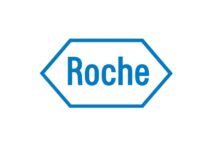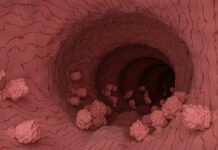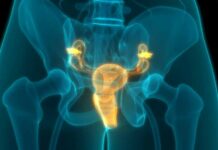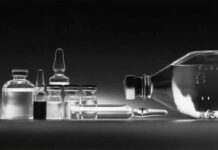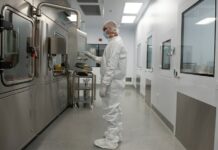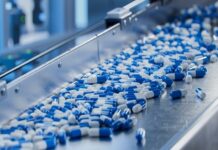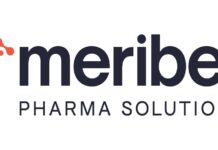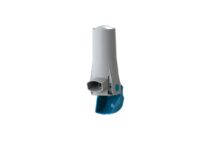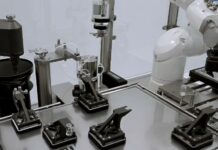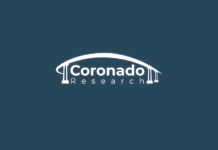The worldwide active pharmaceutical ingredient market size happened to be valued at $214.72 billion in 2023 and is all set to reach a $384 billion valuation by 2033 with a CAR of 6.08% right from 2024 to 2033.
Integration when it comes to the APIs goes on to play a very important role as a factor for growth across various medical domains such as cardiology, oncology, neurology, orthopaedics, pulmonology, gastroenterology, ophthalmology, nephrology, and endocrinology.
The active API market happens to be experiencing phenomenal progress because of its major role as the primary element when it comes to medications, thereby being responsible for the delivery of the desired therapeutic effects.
APIs, which also happen to be called drug substances or even pharmacologic substances, happen to be biologically active elements in numerous pharmaceutical firms, like capsules, tablets, creams, and injectables.
The happen to exert their pharmacological effects by way of influencing bodily functions and also treating diseases.
With some of the medications that happen to have numerous APIs that act in a diverse way within the body, the emergence of active ingredient prescribing takes place as a strategy so as to lessen the errors in medication. Various brand names as well as numerous medicines happen to share similar active ingredients, highlighting the importance of APIs in pharmaceutical formulations as well as their capacity in terms of standardization across the sector.
Apparently, the APIs happen to serve as a major part of the high-quality drug segment, thereby delivering pharmacological activity that’s necessary in terms of diagnosis, treatment, and, at the same time, prevention of diseases while at the same time also influencing bodily functions. By utilizing the APIs to an enormous extent, the healthcare sector can progress into innovation, thereby elevating the sustainability of healthcare systems through the creation of more advanced as well as effective therapeutic products.
It is worth noting that in January 2024, Teva went on to announce its intent to divest the API business as part of its shift to a growth strategy.
Major Highlights
The US API market size happened to be valued at $37 billion in 2023 and is anticipated to reach almost $71 billion by 2033. The market is thereby expected to grow at a CAGR of 6.86% from 2024 to 2033.
Notably, it was North America that dominated the API segment in 2023, having a share of almost 38%. Asia Pacific, on the other hand, sees the fastest CAGR of 6.37% throughout the forecast period.
In terms of synthesis, the synthetic API segment will have the largest market share of 71% in 2023. When we talk of manufacturers, the captive API segment went on to dominate the market, with the largest market share of 57% in 2023. In terms of application, the cardiovascular disease segment went on to exhibit the largest market share of 21% in 2023.
The Synthesis Type
The synthetic segment happened to emerge as a very dominant force in the global API market in 2023, primarily because of the ease of access to raw materials as well as a simplified synthesis process. Such types of chemically synthesized compounds happen to be crafted by way of diverse chemical reactions that get exemplified due to medications such as paracetamol, aspirin, and various antibiotics.
With a focus on pharma fine chemicals as well as chemically synthesized APIs along with intermediates, synthetic APIs happen to hold sway over the market, thereby reflecting the advancements in technology and manufacturing processes in the pharma sector.
The Regional Stand
It is well to be noted that North America went on to emerge as the dominant player in the world pharma ingredient market in 2023. Many large scale API sites happen to be situated in the US, and the fact is that this kind of disparity is anyway attributed to worldwide pricing pressures that happen to favor non-US manufacturers who happen to be benefiting from the subsidies of the government, lower input costs, and lighter regulatory frameworks.
Solutions require bolstering the domestic manufacturing infra so as to safeguard US healthcare security, help with fair global competition, and also nurture sustainable domestic markets.
Although the US sources happen to predominantly involve controlled substances, or what one may call niche APIs that are suited for small-scale production, the dependence on overseas factories for APIs happens to remain quite substantial, thereby urging policymakers as well as the media to check the medical supply chain. Due to these issues, biopharma companies have gone on to fortify the global supply chains, with the US witnessing a significant 50% rise in pharma manufacturing facilities such as the ones for APIs in the last five years.
Especially in Asia Pacific, the API ingredient market is all set for very fast growth and is anticipated to outpace other areas by way of the fastest CAGR across the forecast period.
The competitive capacity of Indian as well as Chinese manufacturers on the worldwide stage has gone on to induce pricing pressures on the western players, thereby prompting a major shift within worldwide pharma production towards Asia. This kind of trend is especially evident with new APIs, in which Asian manufacturers go on to dominate or even witness much faster migration. Although Asia and Europe go on to emerge as the primary hubs in terms of API production, the balance happens to tilt more towards Asia for most of the APIs, highlighting the regions’ important role in the pharmaceutical spectrum.
In Terms of Type
The innovative API segment dominated the API market in 2023. The fact is that innovative APIs go on to take the lead across the world, all thanks to strong government regulations, set R&D infrastructure, and elevated subsidies that help with innovative drug development. The innovator drug which goes on to feature specific activity ingredients has gone on to secure initial approval so as to spearhead this segment. These drugs happen to undergo some very exhaustive testing so as to make sure of safety, efficacy, and quality teamed by the acquisition of drug patents, hence in a way shielding their market exclusively for almost 20 years. This kind of patent protection safeguards against competition, providing the founding company with special rights to manufacture and distribute the drug till patent expiration, thereby settling the stage for sustained market dominance as well as profitability.



